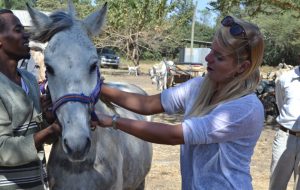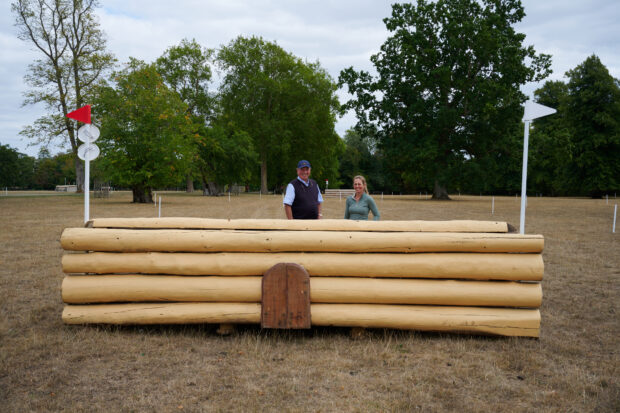In April 2014, H&H readers chose SPANA as our charity of the year. As part of our partnership with the charity, I was invited to see the work it does with working equines first hand. Earlier this month I went to Ethiopia to spend three days with the country director Dr Nigatu Aklilu to see the charity's struggle to improve the welfare of the country's 2.5 million working horses.
On our second morning — having been kicked out of our third hotel to make room for government officials — we headed to another SPANA mobile clinic in Modjo.
 This clinic is slightly less in demand than Adama but there was still a large queue of horses waiting to be treated when we arrived.
This clinic is slightly less in demand than Adama but there was still a large queue of horses waiting to be treated when we arrived.
One horse that immediately caught my eye had what looked like a traumatic wound up the entirety of one leg (see video). As much as the wound looked dramatic, it was the fact that it was almost green in colour that really unnerved me.
Dr Nigatu Aklilu spoke to the owner and explained that the horse (pictured below) was suffering from Epizootic Lymphangitis (EZL). This is one of the most common issues that the SPANA vets have to deal in Ethiopia. The fungal disease is contagious and once  contracted spreads through the horse’s lymph system. It is fatal if it is not diagnosed in its early stages.
contracted spreads through the horse’s lymph system. It is fatal if it is not diagnosed in its early stages.
Dr Nigatu also explained that the reason why the wounds looked green was because the owner had tried to treat it with sulphuric acid — which is what is commonly found in car batteries.
That an owner could be so ignorant of a horse’s welfare that they thought it was acceptable to pour acid over an open wound made me incredibly angry, but the owner explained he believed it would stop the disease spreading.
The SPANA vets spent 30 minutes using a razor blade to clear the area and clean it. They then burst the majority of the cysts, which had grown on the legs. The horse was sent home with medication and as the disease was only at its moderate stage, Dr Nigatu was hopeful that the horse might recover.
More EZL
In the afternoon we saw a group of horses that were suffering from EZL at varying  stages. Most of the cases were moderate, meaning that with the help of SPANA, they will hopefully make a full recovery.
stages. Most of the cases were moderate, meaning that with the help of SPANA, they will hopefully make a full recovery.
Unfortunately one of the horses was in the latter stages of the disease. At this point it starts to attack the horse’s lungs and entire lymph system meaning that they struggle to breathe. If horses are not treated for EZL, they tend to eventually die from suffocation. It will normally take two to three months for them to succumb to the disease.
The vets recommended that the horse be put down, but the owner would not allow it. He also revealed that he was still using the horse to pull a cart.
Through my time with SPANA both in Morocco and Ethiopia the topic of euthanasia has always been something I have found hard to deal with. It always has to be down to the owner if they decide euthanase or not and this tend to results in needless suffering.
How you can help
Although SPANA is working to educate Ethiopian owners to help themselves, their work relies on British owners supporting working equines worldwide.
➤ EZL can be treated for £20.
To donate to SPANA visit: www.spana.org/donate-now




